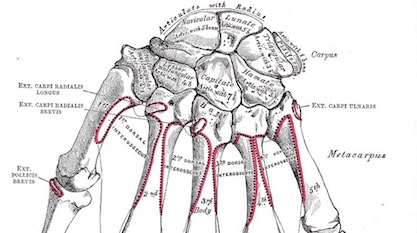 Intelligent Design
Intelligent Design
Join Us: Conference on Engineering in Living Systems, April 23-25, in Southern California


Engineers, unlike evolutionary biologists, understand at a deep level how things work, why they work, and when they fail, why they don’t work. So the intelligent design movement has long welcomed engineering insights as a corrective to assurances from evolutionists that they’ve got everything about the mystery of biological origins all figured out. With this in mind, it’s satisfying to invite you to the 2020 Conference on Engineering in Living Systems, April 23 to 25, at Biola University.
See You in Southern California
Our esteemed Evolution News contributor Steve Laufmann is the organizer and he welcomes you to join him on the Biola campus in La Mirada, CA. From the event description page, here are some subjects to be covered:
- Intersection of Biology and Engineering — the impacts of engineering thinking in the study of biology
- Architecture of Living Systems — design principles and design patterns in living systems
- Theory of Design — theoretical foundations for a positive theory of design in living systems
- Adaptation — mechanisms and processes used by living systems to adapt to changing circumstances and environments
- Coherence — organization of capabilities and processes to achieve and sustain life
- Orchestration and Optimization — control systems and lifecycle processes
- Interdependency and Causal Circularity — how complex and coherent systems are initialized and jumpstarted
- Resilience — failure prevention and anti-fragility in living systems
- Applications and Models — formal methods for modeling and understanding of living systems
More information is here. There is a simple application if you wish to attend. The event is sponsored by the Center for Science & Culture and its Engineering Research Group.

The “Poor Design” Accusation
The most spectacular example of an engineered living system is the human body, toward the invention of which the whole cosmos appears to have been very carefully aimed. As Mr. Laufmann has written here, on the charge of “poor design”:
To understand human anatomy and physiology it’s essential to carefully examine the whole system before declaring the parts badly designed. It’s essential to consider how the parts relate to and interact with each other — the kinds of tolerances, stresses, forces, ranges of motion, capabilities, and overall dynamics that are required.
And, for goodness sakes, it’s essential to note that it works.
What works. Why it works. These are the questions that get short shrift from biology in considering how the wonders of life originated. Join us — engineers, biologists, and other inquisitive adults — in Southern California where these issues will at last get their due attention.
Image: Bone structure of a human hand, by Henry Gray (1918), Anatomy of the Human Body, [Public domain], via Wikimedia Commons.
